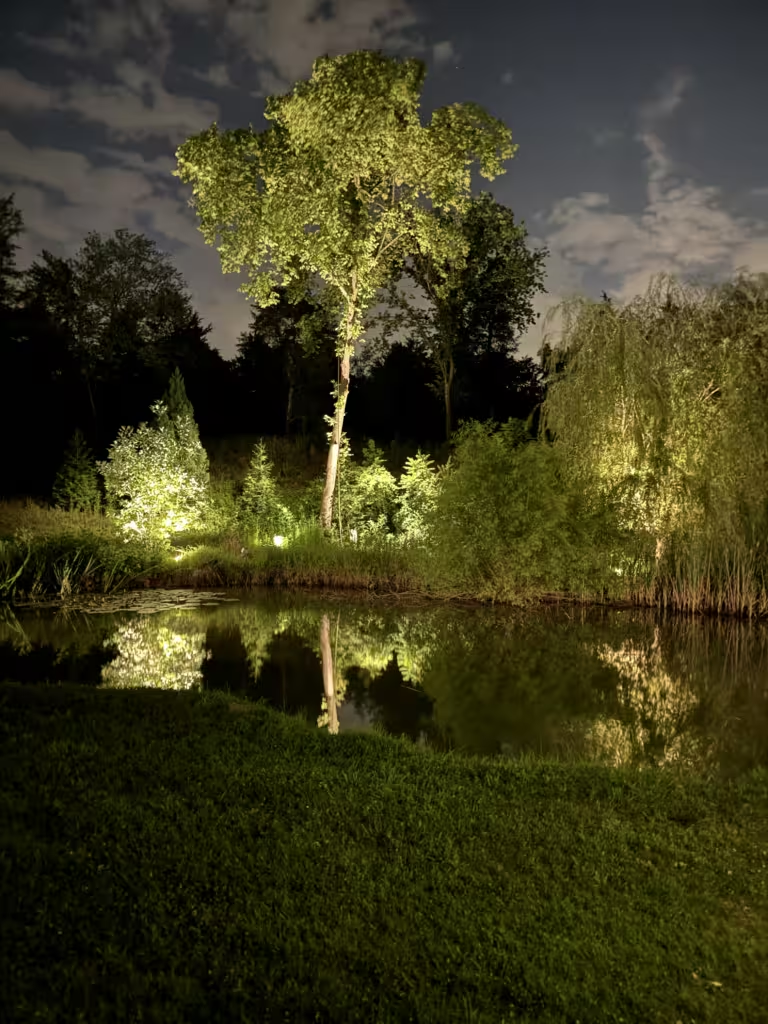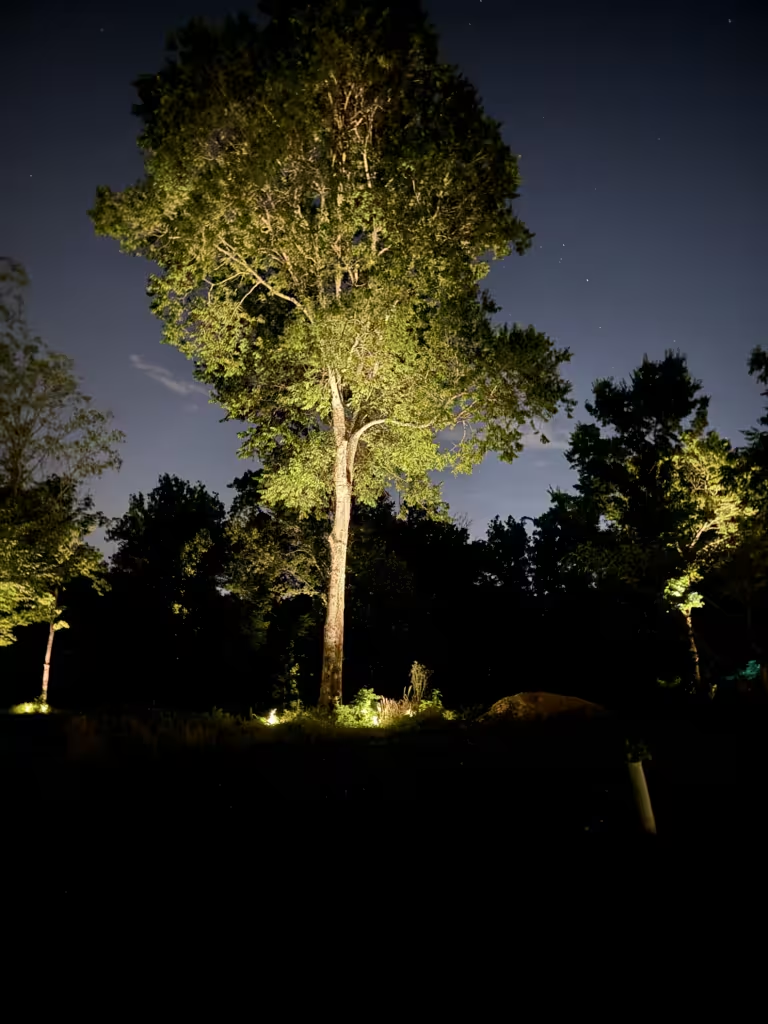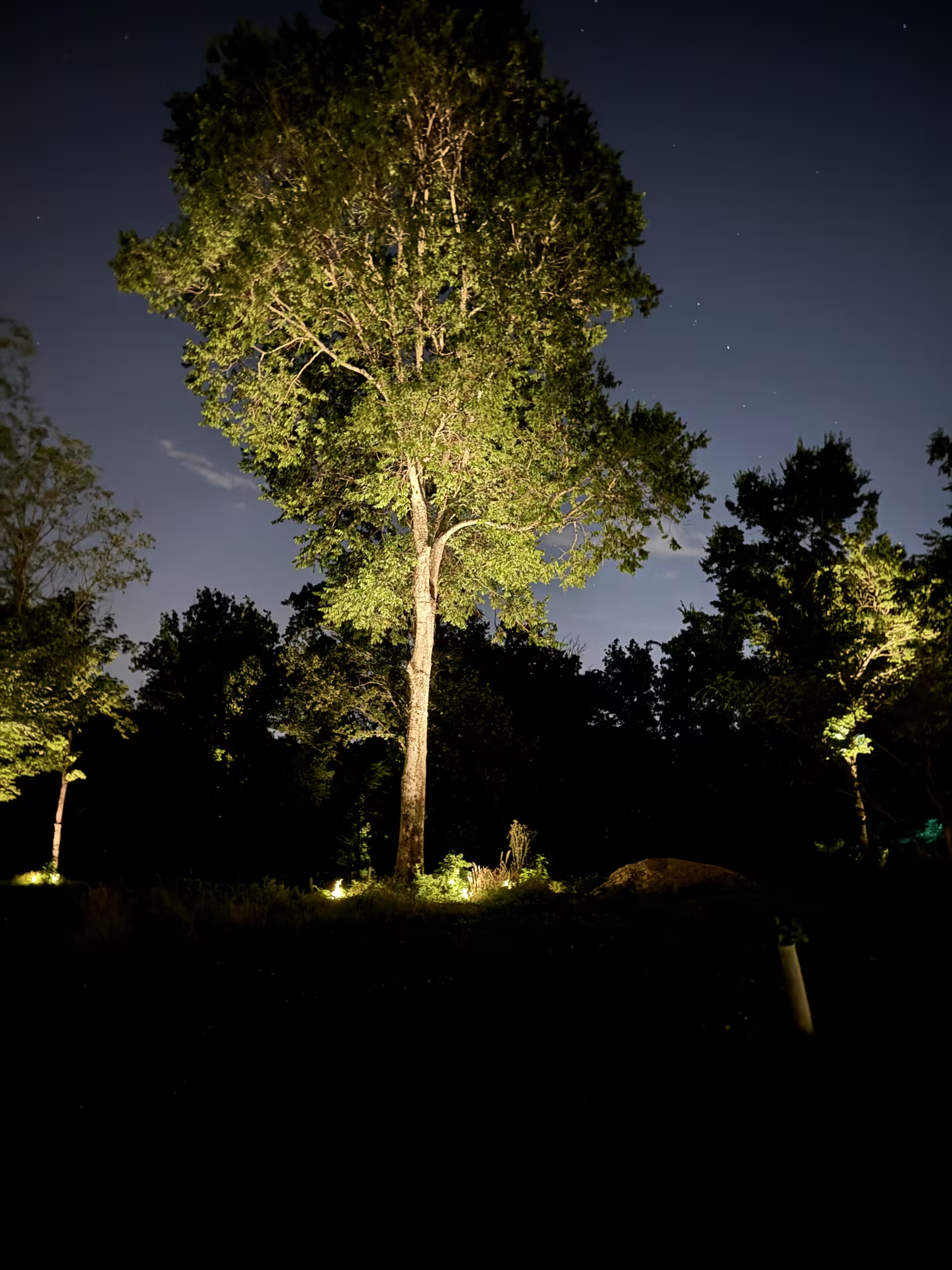Great landscape lighting design begins with down lighting. As a foundational element of a layered lighting approach, down lighting creates a subtle, natural illumination that enhances the beauty and functionality of outdoor spaces. At Dayloom, based in Northern Virginia and Maryland, we prioritize down lighting in our designs to achieve stunning, elegant effects that highlight the best features of the landscape. Here’s why down lighting is crucial in landscape lighting design.
Creating a Layered Lighting Design
Down lighting serves as the base of a layered lighting design. By starting with down lighting, we can softly illuminate the ground around key landscape features, such as trees, pathways, and driveways. This foundational layer provides a natural, understated glow that sets the stage for additional lighting elements.
Enhancing Trees and Natural Features
When a tree is solely down lit, it appears to be floating, as there is no light tying it to the ground. Starting with down lighting first softly lights the ground around the tree, giving it a base in the lighting scene. This technique creates a more grounded and visually appealing effect, highlighting the tree’s natural beauty without overpowering it.

Illuminating Pathways and Driveways
Down lighting is also an excellent method for illuminating pathways and driveways. Traditional path lighting can often result in a line of lights that look like a row of soldiers marching down the path. Down lighting, on the other hand, provides a more natural and elegant solution. By positioning lights in trees or other elevated structures, we can cast light down onto the pathways, creating a beautiful, dappled effect that guides the way without drawing attention to the light source itself.
Achieving the Desired Effect
At Dayloom, our focus is always on producing the effect we are looking to achieve and not seeing where the light is coming from. Down lighting allows us to create a beautiful, elegant lighting design that seamlessly integrates with the landscape. The light appears to emanate naturally from the surroundings, enhancing the overall ambiance and ensuring that the fixtures themselves remain unobtrusive.
Benefits of Down Lighting
- Natural Appearance Down lighting mimics the natural light of the moon, creating a soft and serene atmosphere. This approach highlights the landscape’s features in a way that feels organic and unforced.
- Reduced Glare By directing light downwards, down lighting minimizes glare, making outdoor spaces more comfortable and inviting. This is particularly important for pathways and driveways, where excessive glare can be a distraction or safety hazard.
- Enhanced Safety Down lighting improves visibility on pathways and driveways, enhancing safety without the need for intrusive fixtures. The gentle illumination helps prevent trips and falls while maintaining the aesthetic integrity of the landscape.
- Versatility Down lighting is a versatile technique that can be used to highlight a variety of landscape elements, from trees and shrubs to architectural features. This flexibility allows for creative and customized lighting designs that cater to the unique characteristics of each property.

Conclusion
The importance of down lighting in landscape lighting cannot be overstated. As the base of a layered lighting design, it provides a natural, elegant illumination that enhances the beauty and functionality of outdoor spaces. By softly lighting the ground around trees and other features, down lighting ties elements together, creating a cohesive and visually appealing scene. It’s also a superior method for illuminating pathways and driveways, avoiding the harsh lines of traditional path lighting. At Dayloom, we specialize in creating stunning landscape lighting designs that prioritize down lighting to achieve the desired effect while ensuring that the light sources remain unobtrusive. Contact us today to learn more about how down lighting can transform your outdoor space.

